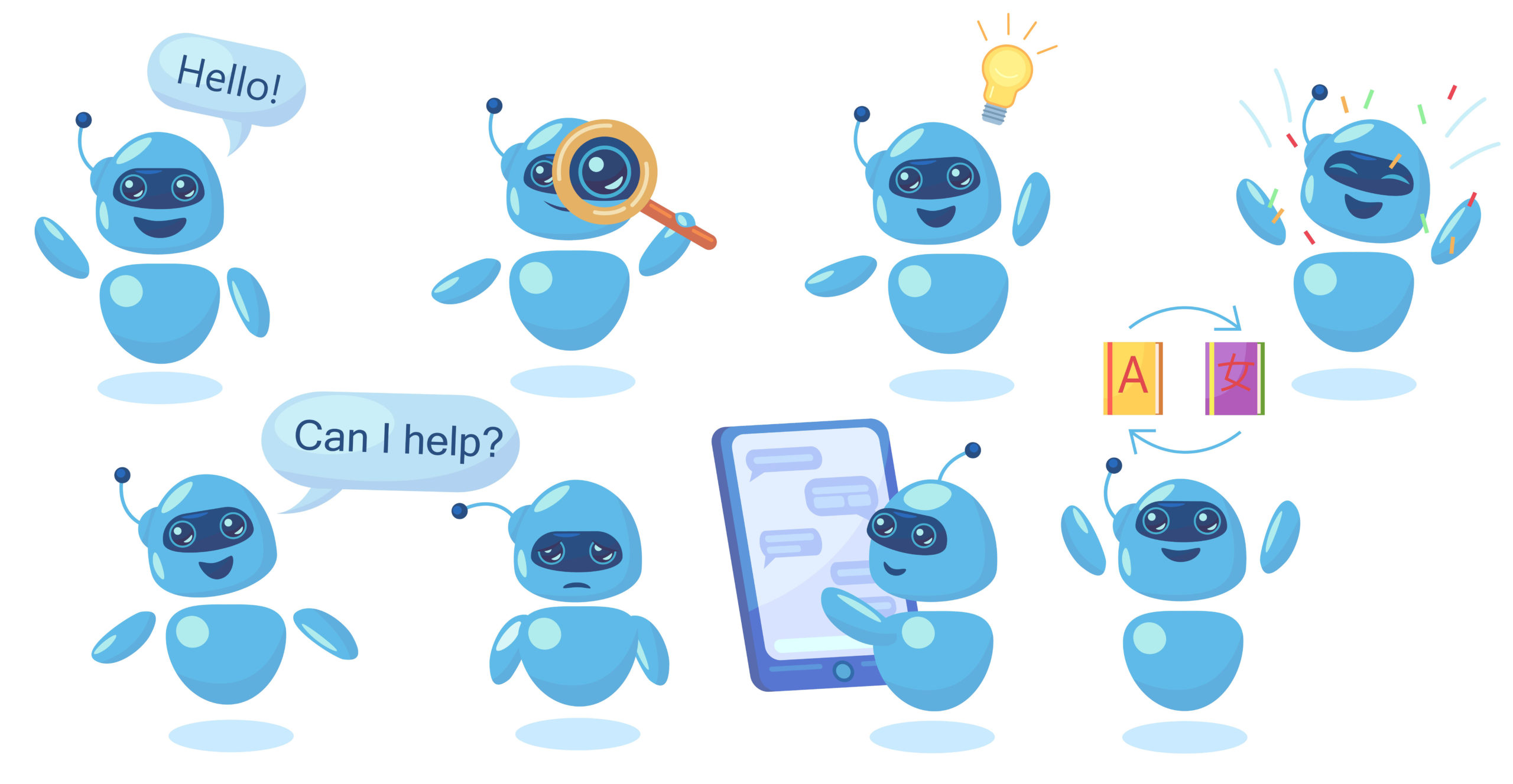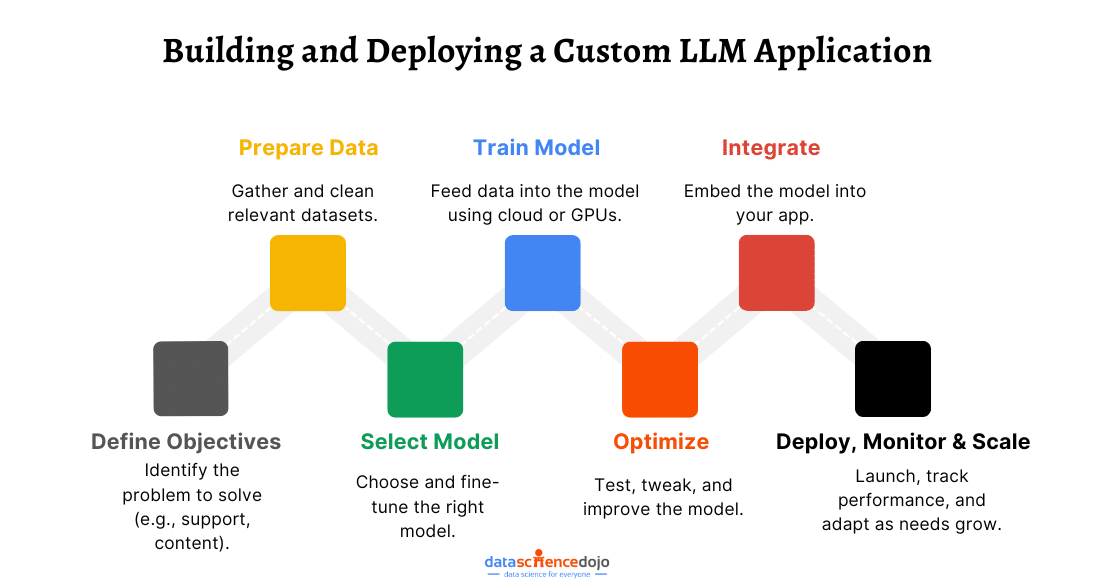Large language models (LLMs) are one of the most exciting developments in artificial intelligence. They have the potential to revolutionize a wide range of industries, from healthcare to customer service to education. But in order to realize this potential, we need more people who know how to build and deploy LLM applications.
That’s where this blog comes in. In this blog, we’re going to discuss the importance of learning to build your own LLM application, and we’re going to provide a roadmap for becoming a large language model developer.
We believe this blog will be a valuable resource for anyone interested in learning more about LLMs and how to build and deploy Large Language Model applications. So, whether you’re a student, a software engineer, or a business leader, we encourage you to read on!
Why do I Need to Build a Custom LLM Application?
Here are some of the benefits of learning to build your own LLM application:
- You’ll be able to create innovative new applications that can solve real-world problems.
- You’ll be able to use LLMs to improve the efficiency and effectiveness of your existing applications.
- You’ll be able to gain a competitive edge in your industry.
- You’ll be able to contribute to the development of this exciting new field of artificial intelligence.
Read more —> How to build and deploy custom llm application for your business
Roadmap to Building Custom LLM Applications
If you’re interested in learning more about LLMs and how to build and deploy LLM applications, then this blog is for you. We’ll provide you with the information you need to get started on your journey to becoming a large language model developer step by step.

1. Introduction to Generative AI
Generative AI is a type of artificial intelligence that can create new content, such as text, images, or music. Large language models (LLMs) are a type of generative AI that can generate text that is often indistinguishable from human-written text. In today’s business world, Generative AI is being used in a variety of industries, such as healthcare, marketing, and entertainment.
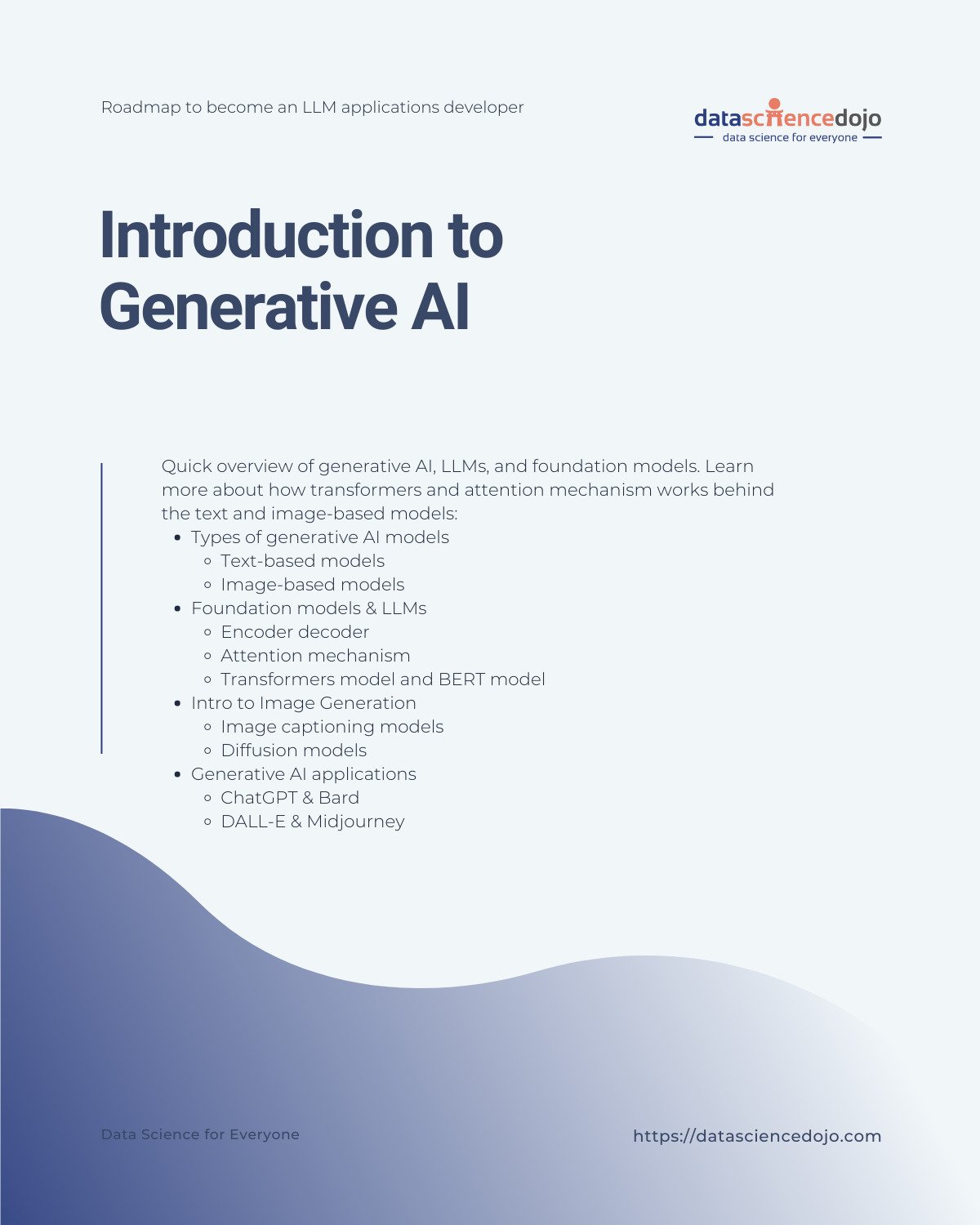
For example, in healthcare, generative AI is being used to develop new drugs and treatments, and to create personalized medical plans for patients. In marketing, generative AI is being used to create personalized advertising campaigns and to generate product descriptions. In entertainment, generative AI is being used to create new forms of art, music, and literature.
2. Emerging Architectures for LLM Applications
There are a number of emerging architectures for LLM applications, such as Transformer-based models, graph neural networks, and Bayesian models. These architectures are being used to develop new LLM applications in a variety of fields, such as natural language processing, machine translation, and healthcare.

There are a number of emerging architectures for LLM applications, such as Transformer-based models, graph neural networks, and Bayesian models. These architectures are being used to develop new LLM applications in a variety of fields, such as natural language processing, machine translation, and healthcare.
For example, Transformer-based models are being used to develop new machine translation models that can translate text between languages more accurately than ever before. Graph neural networks are being used to develop new fraud detection models that can identify fraudulent transactions more effectively. Bayesian models are being used to develop new medical diagnosis models that can diagnose diseases more accurately.
3. Embeddings
Embeddings are a type of representation that is used to encode words or phrases into a vector space. This allows LLMs to understand the meaning of words and phrases in context.
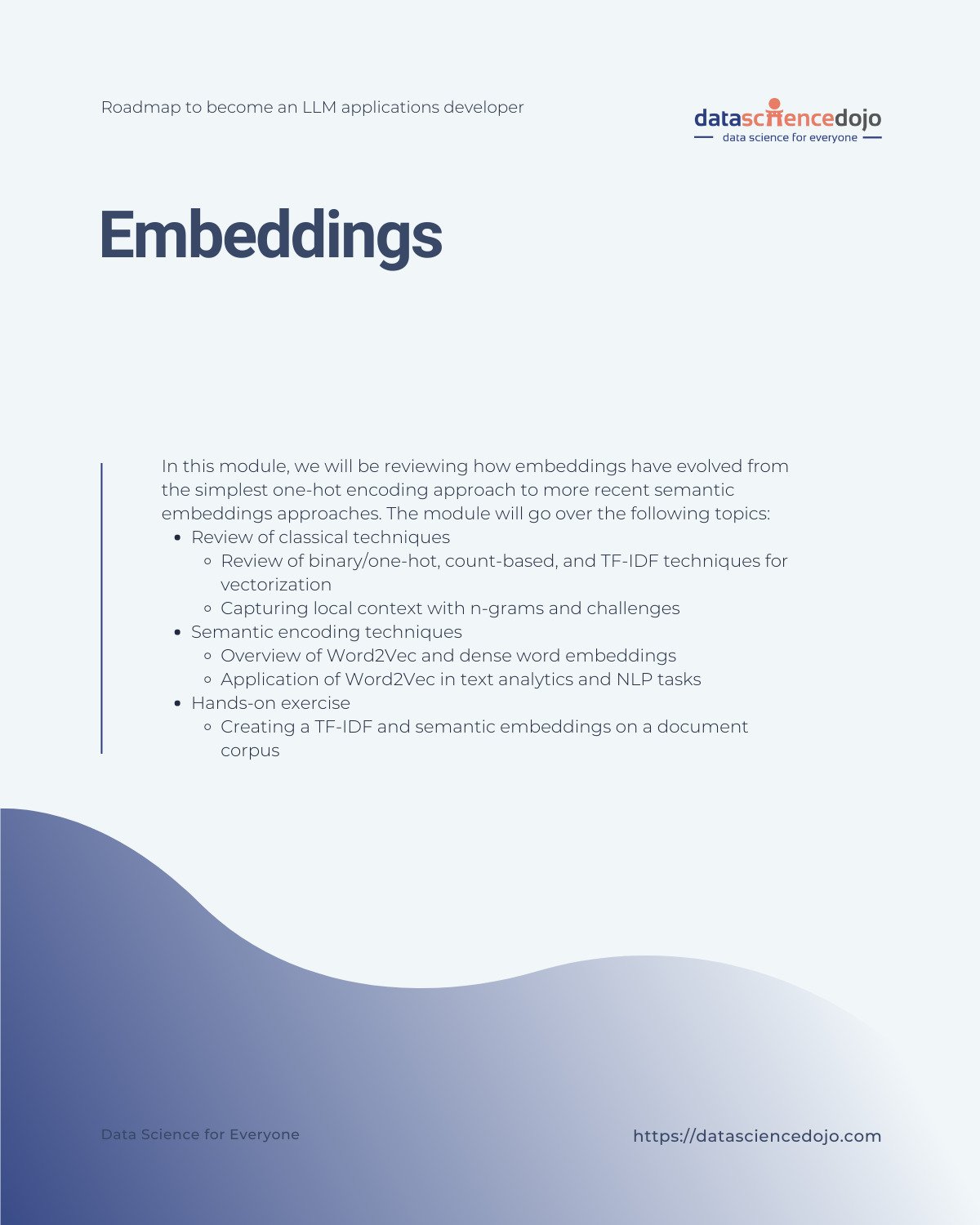
Embeddings are used in a variety of LLM applications, such as machine translation, question answering, and text summarization. For example, in machine translation, embeddings are used to represent words and phrases in a way that allows LLMs to understand the meaning of the text in both languages.
In question answering, embeddings are used to represent the question and the answer text in a way that allows LLMs to find the answer to the question. In text summarization, embeddings are used to represent the text in a way that allows LLMs to generate a summary that captures the key points of the text.
4. Attention Mechanism and Transformers
The attention mechanism is a technique that allows LLMs to focus on specific parts of a sentence when generating text. Transformers are a type of neural network that uses the attention mechanism to achieve state-of-the-art results in natural language processing tasks.

The attention mechanism is used in a variety of LLM applications, such as machine translation, question answering, and text summarization. For example, in machine translation, the attention mechanism is used to allow LLMs to focus on the most important parts of the source text when generating the translated text.
In answering the question, the attention mechanism is used to allow LLMs to focus on the most important parts of the question when finding the answer. In text summarization, the attention mechanism is used to allow LLMs to focus on the most important parts of the text when generating the summary.
5. Vector Databases
Vector databases are a type of database that stores data in vectors. This allows LLMs to access and process data more efficiently.
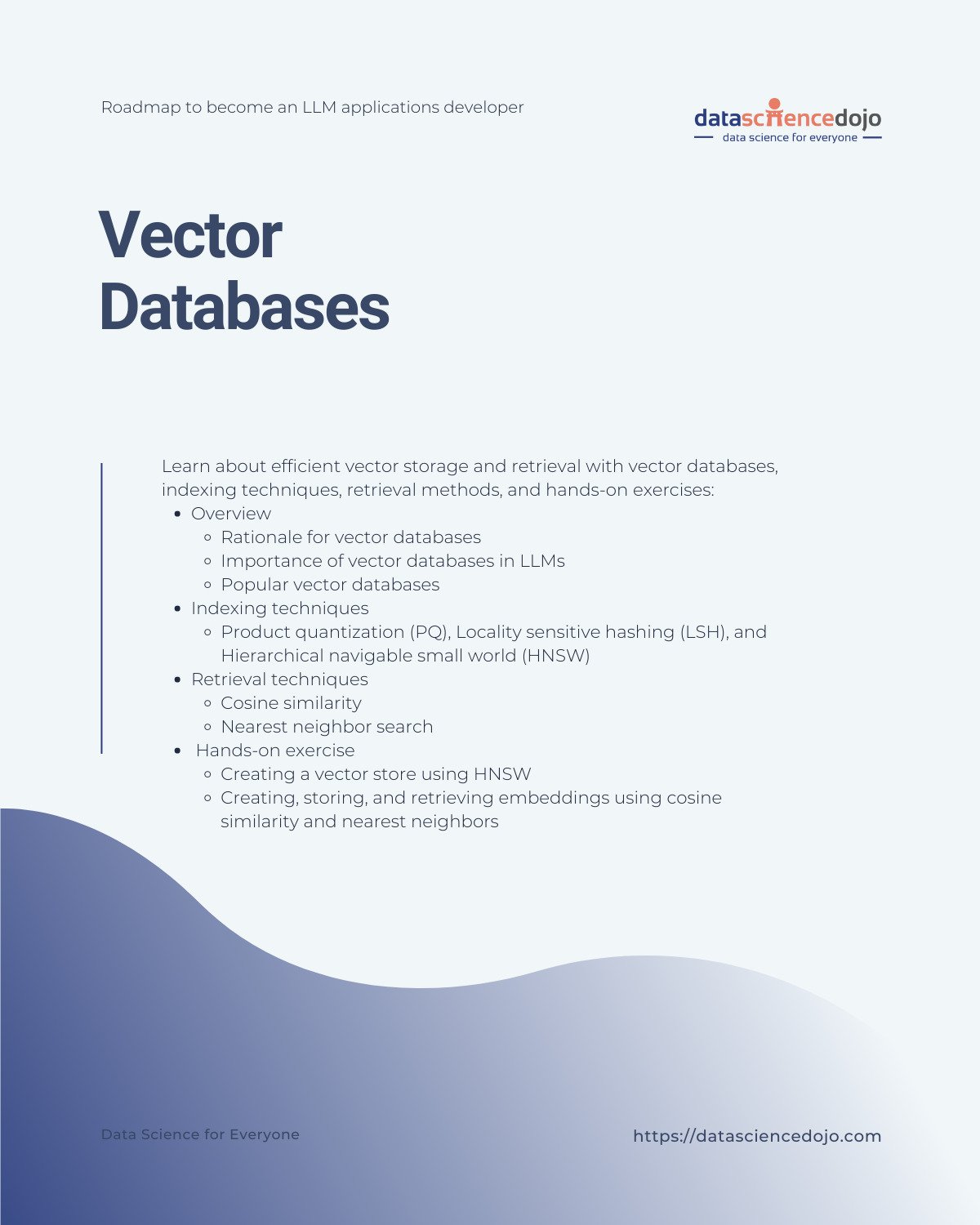
Vector databases are used in a variety of LLM applications, such as machine learning, natural language processing, and recommender systems.
For example, in machine learning, vector databases are used to store the training data for machine learning models. In natural language processing, vector databases are used to store the vocabulary and grammar for natural language processing models. In recommender systems, vector databases are used to store the user preferences for different products and services.
6. Semantic Search
Semantic search is a type of search that understands the meaning of the search query and returns results that are relevant to the user’s intent. LLMs can be used to power semantic search engines, which can provide more accurate and relevant results than traditional keyword-based search engines.
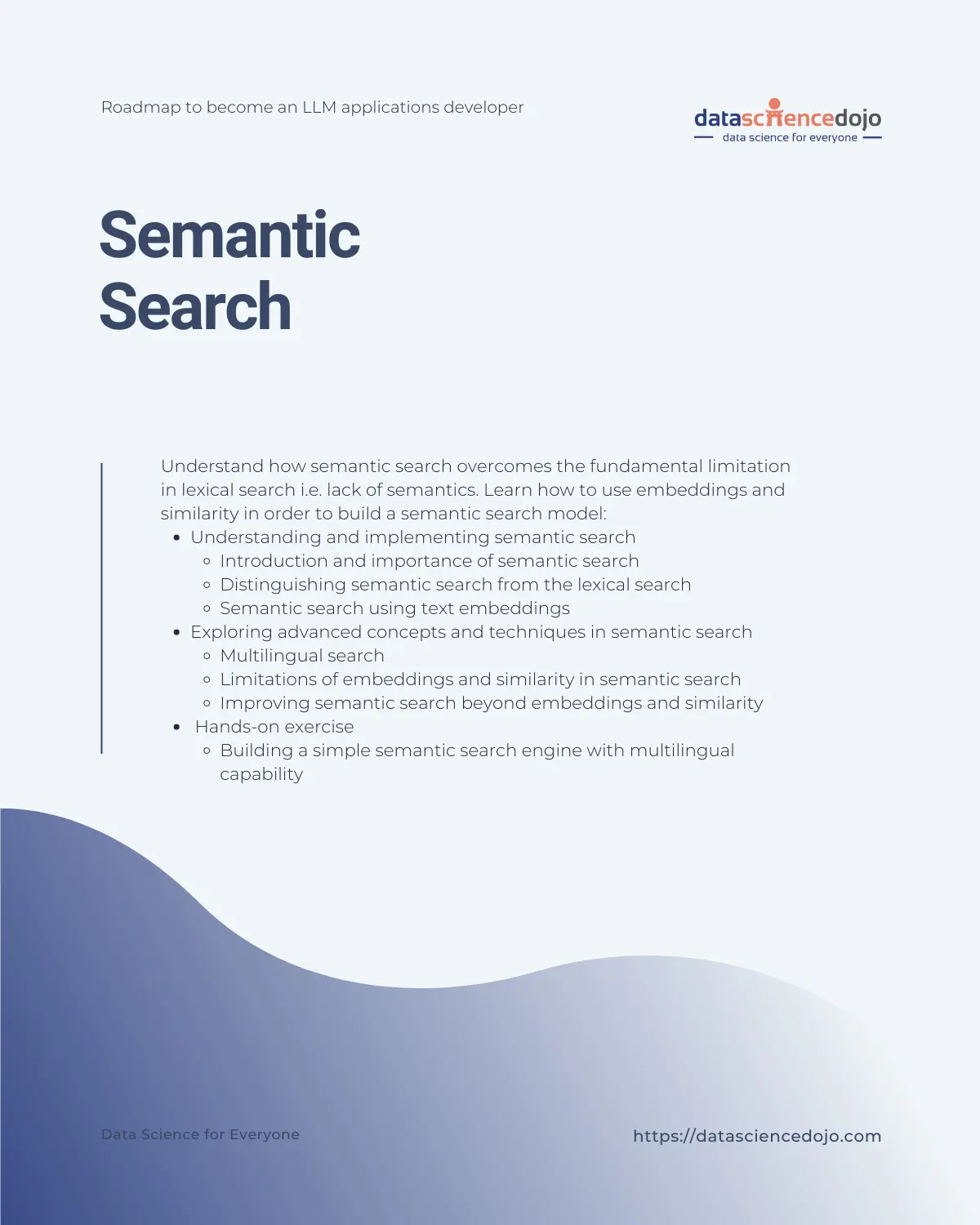
Semantic search is used in a variety of industries, such as e-commerce, customer service, and research. For example, in e-commerce, semantic search is used to help users find products that they are interested in, even if they don’t know the exact name of the product.
In customer service, semantic search is used to help customer service representatives find the information they need to answer customer questions quickly and accurately. In research, semantic search is used to help researchers find relevant research papers and datasets.
7. Prompt Engineering
Prompt engineering is the process of creating prompts that are used to guide LLMs to generate text that is relevant to the user’s task. Prompts can be used to generate text for a variety of tasks, such as writing different kinds of creative content, translating languages, and answering questions.

Prompt engineering is used in a variety of LLM applications, such as creative writing, machine translation, and question answering. For example, in creative writing, prompt engineering is used to help LLMs generate different creative text formats, such as poems, code, scripts, musical pieces, email, letters, etc.
In machine translation, prompt engineering is used to help LLMs translate text between languages more accurately. In answering questions, prompt engineering is used to help LLMs find the answer to a question more accurately.
8. Fine-Tuning of Foundation Models
Foundation models are large language models that are pre-trained on massive datasets. Fine-tuning is the process of adjusting the parameters of a foundation model to make it better at a specific task. Fine-tuning can be used to improve the performance of LLMs on a variety of tasks, such as machine translation, question answering, and text summarization.

Foundation models are pre-trained on massive datasets. Fine-tuning is the process of adjusting the parameters of a foundation model to make it better at a specific task. Fine-tuning is used to improve the performance of LLMs on a variety of tasks, such as machine translation, question answering, and text summarization.
For example, LLMs can be fine-tuned to translate text between specific languages, to answer questions about specific topics, or to summarize text in a specific style.
9. Orchestration Frameworks
Orchestration frameworks are tools that help developers to manage and deploy LLMs. These frameworks can be used to scale LLMs to large datasets and to deploy them to production environments.
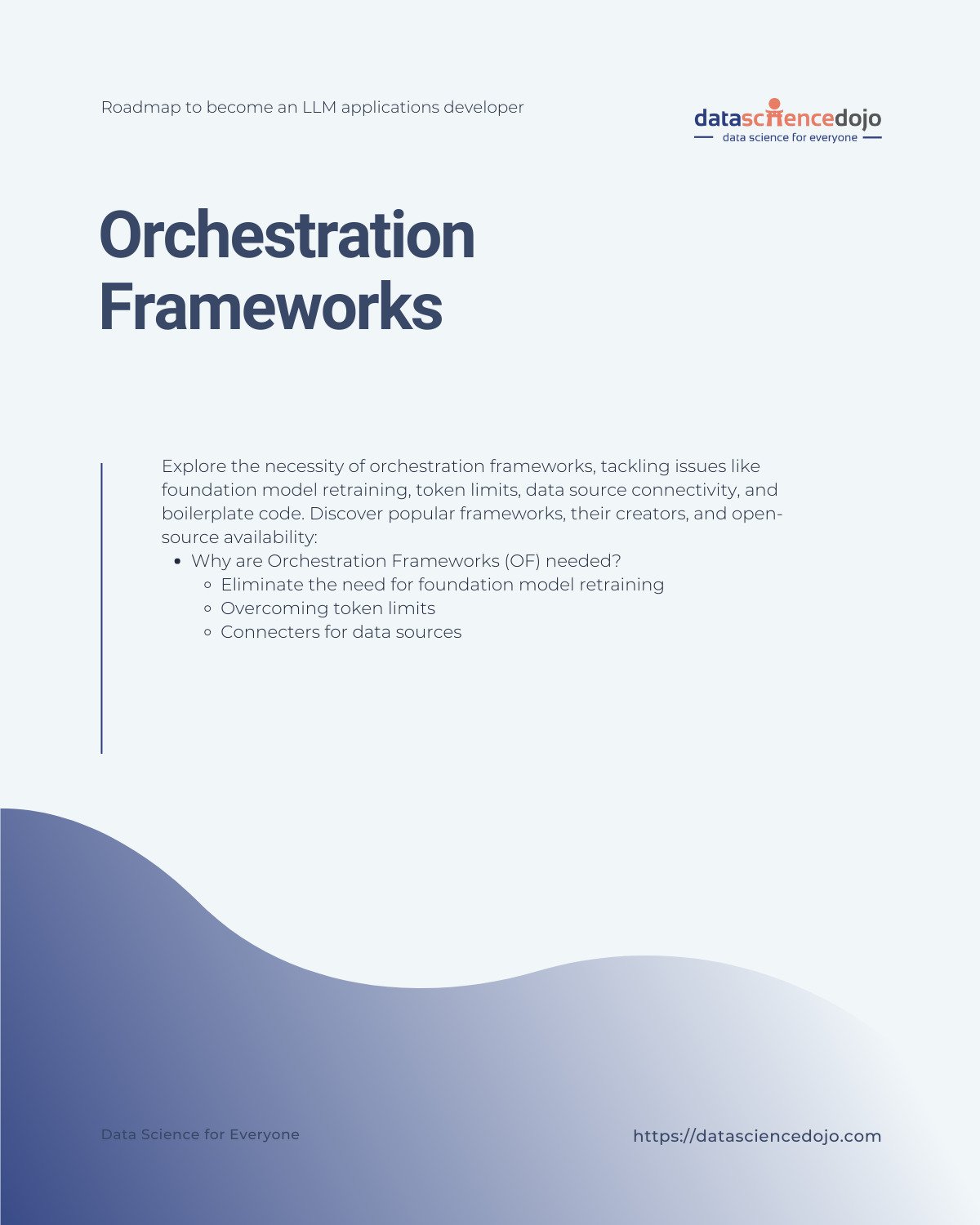
Orchestration frameworks are used to manage and deploy LLMs. These frameworks can be used to scale LLMs to large datasets and to deploy them to production environments. For example, orchestration frameworks can be used to manage the training of LLMs, to deploy LLMs to production servers, and to monitor the performance of LLMs
10. LangChain
LangChain is a framework for building LLM applications. It provides a number of features that make it easy to build and deploy LLM applications, such as a pre-trained language model, a prompt engineering library, and an orchestration framework.
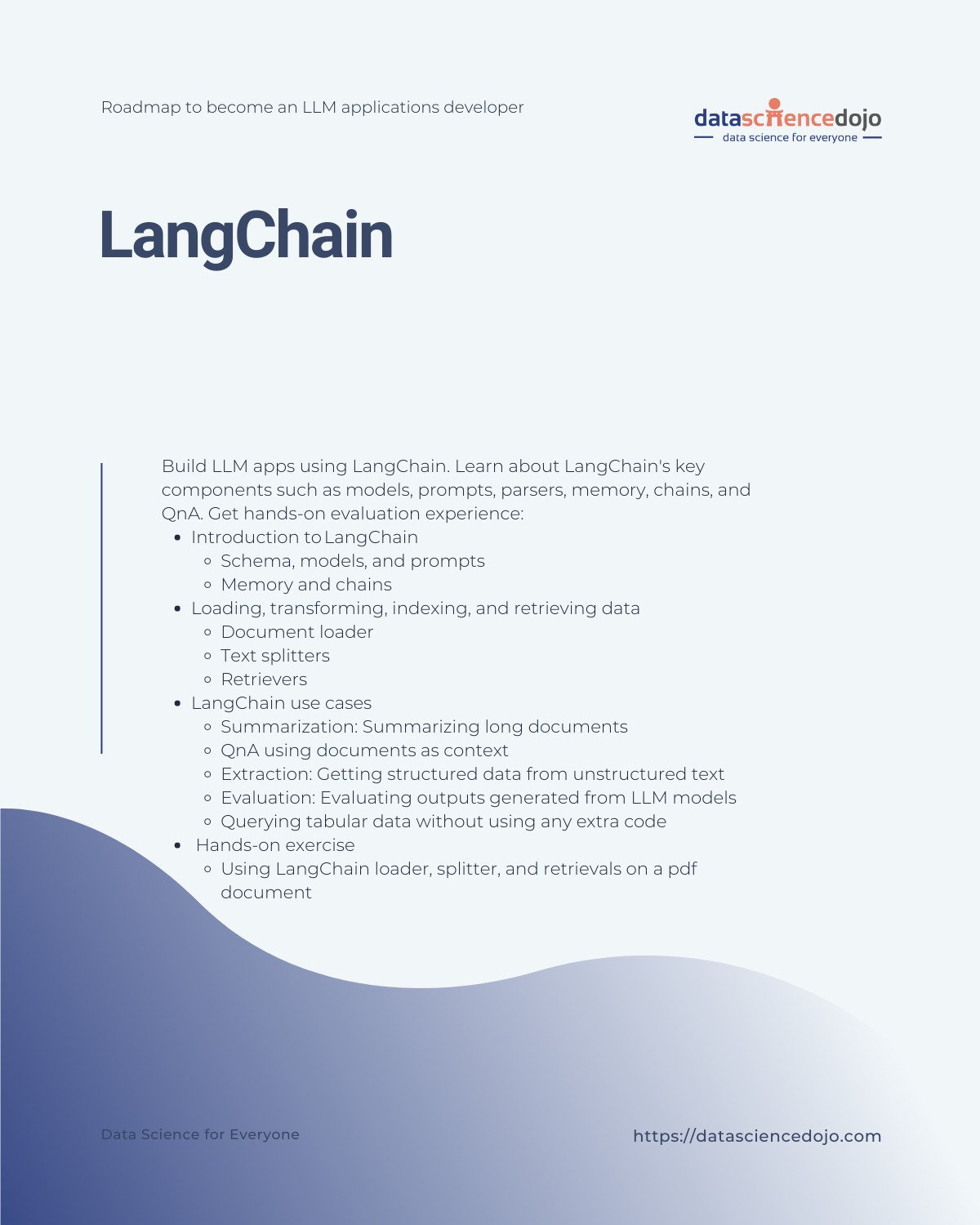
Overall, LangChain is a powerful and versatile framework that can be used to create a wide variety of LLM-powered applications. If you are looking for a framework that is easy to use, flexible, scalable, and has strong community support, then LangChain is a good option.
11. Autonomous Agents
Autonomous agents are software programs that can act independently to achieve a goal. LLMs can be used to power autonomous agents, which can be used for a variety of tasks, such as customer service, fraud detection, and medical diagnosis.

12. LLM Ops
LLM Ops is the process of managing and operating LLMs. This includes tasks such as monitoring the performance of LLMs, detecting and correcting errors, and upgrading Large Language Models to new versions.
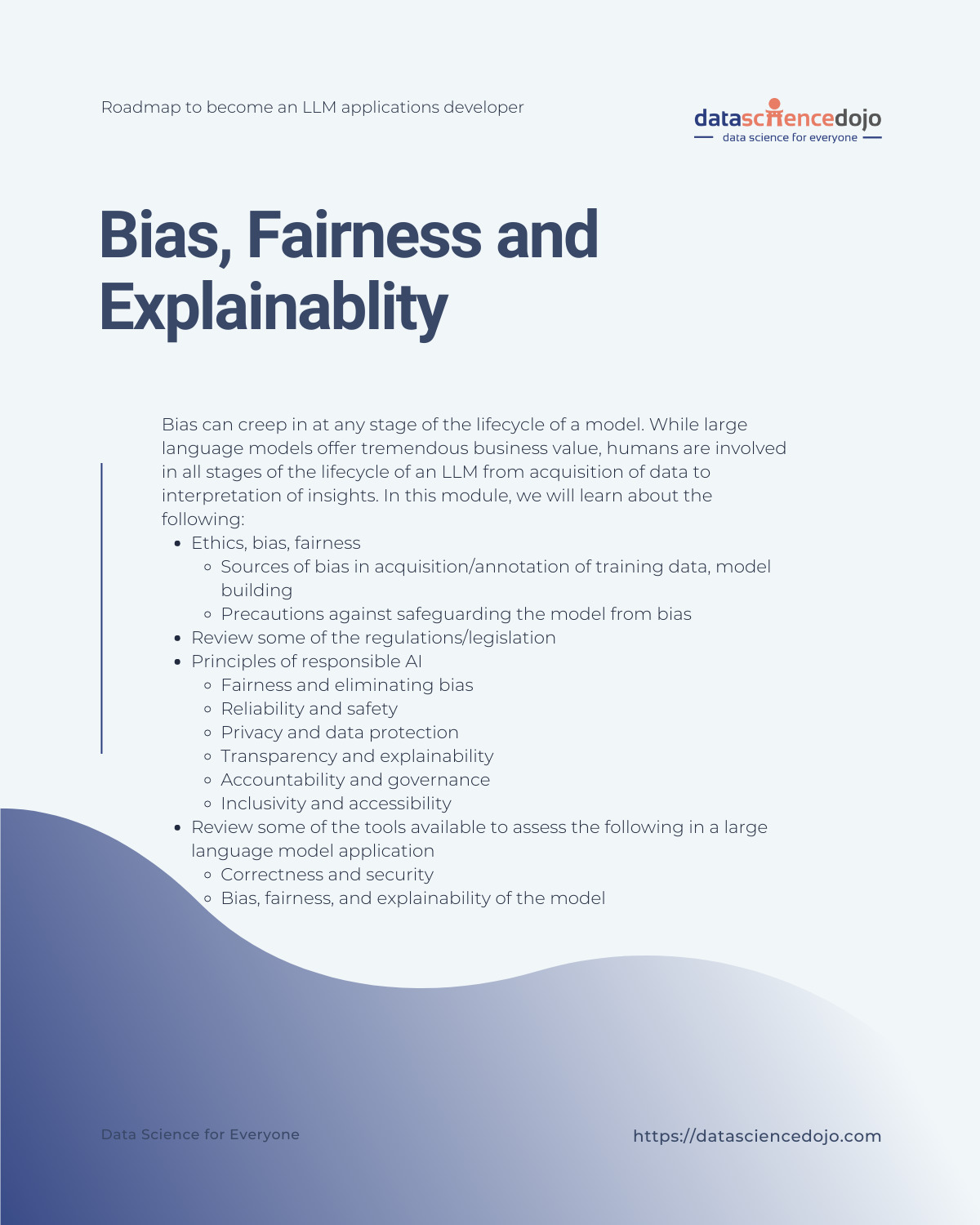
13. Recommended Projects
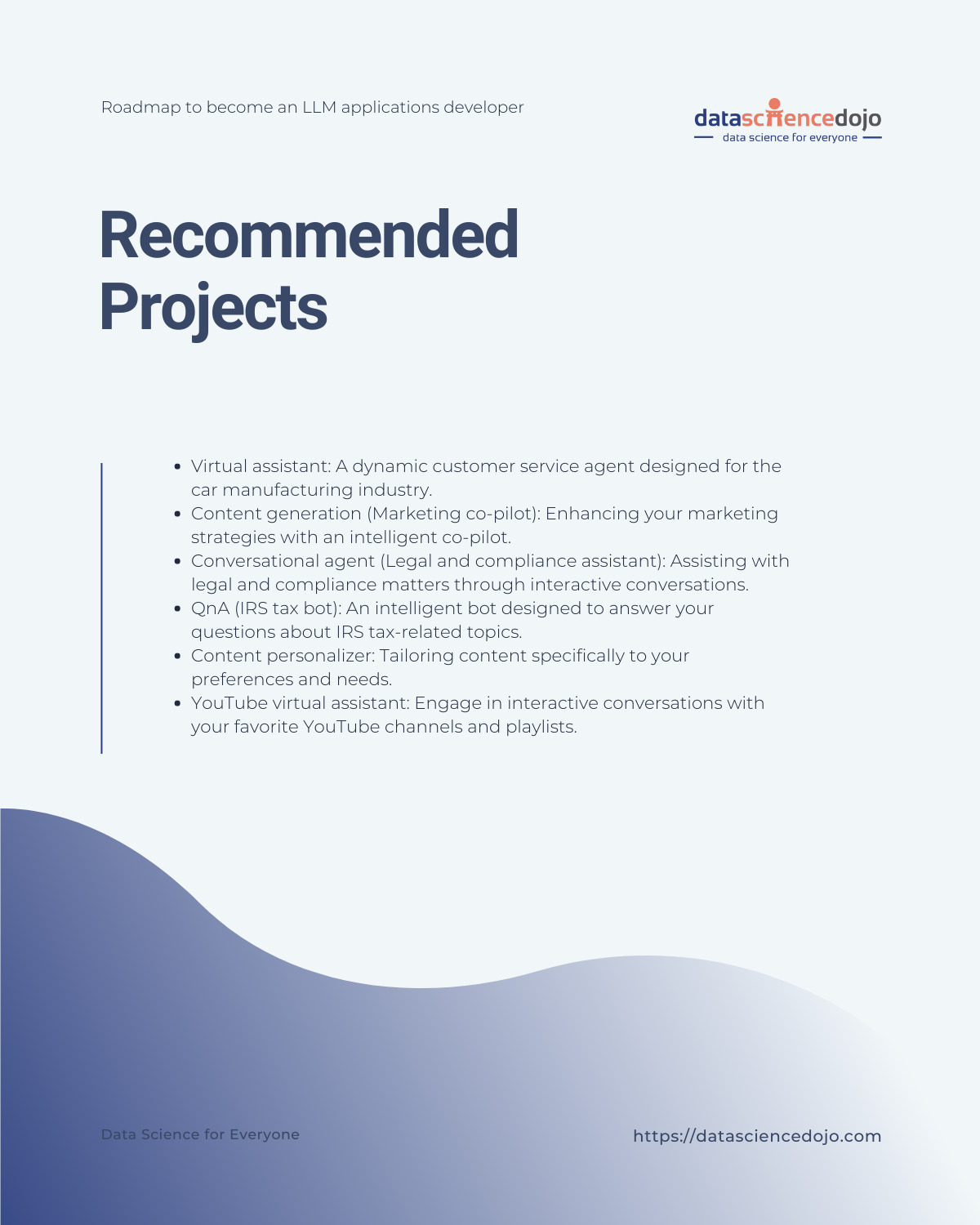
There are a number of recommended projects for developers who are interested in learning more about LLMs. These projects include:
- Chatbots: LLMs can be used to create chatbots that can hold natural conversations with users. This can be used for a variety of purposes, such as customer service, education, and entertainment. For example, the Google Assistant uses LLMs to answer questions, provide directions, and control smart home devices.
- Text generation: LLMs can be used to generate text, such as news articles, creative writing, and code. This can be used for a variety of purposes, such as marketing, content creation, and software development. For example, the OpenAI GPT-3 language model has been used to generate realistic-looking news articles and creative writing.
- Translation: LLMs can be used to translate text from one language to another. This can be used for a variety of purposes, such as travel, business, and education. For example, the Google Translate app uses LLMs to translate text between over 100 languages.
- Question answering: LLMs can be used to answer questions about a variety of topics. This can be used for a variety of purposes, such as research, education, and customer service. For example, the Google Search engine uses LLMs to provide answers to questions that users type into the search bar.
- Code generation: LLMs can be used to generate code, such as Python scripts and Java classes. This can be used for a variety of purposes, such as software development and automation. For example, the GitHub Copilot tool uses LLMs to help developers write code more quickly and easily.
- Data analysis: LLMs can be used to analyze large datasets of text and code. This can be used for a variety of purposes, such as fraud detection, risk assessment, and customer segmentation. For example, the Palantir Foundry platform uses LLMs to analyze data from a variety of sources to help businesses make better decisions.
- Creative writing: LLMs can be used to generate creative text formats, such as poems, code, scripts, musical pieces, email, letters, etc. This can be used for a variety of purposes, such as entertainment, education, and marketing. For example, the Bard language model can be used to generate different creative text formats, such as poems, code, scripts, musical pieces, email, letters, etc.
LLM Bootcamp: Learn to Build Your Own Applications
Data Science Dojo’s Large Language Models Bootcamp will teach you everything you need to know to build and deploy your own LLM applications. You’ll learn about the basics of LLMs, how to train LLMs, and how to use LLMs to build a variety of applications.
The bootcamp will be taught by experienced instructors who are experts in the field of large language models. You’ll also get hands-on experience with LLMs by building and deploying your own applications.
If you’re interested in learning more about LLMs and how to build and deploy LLM applications, then I encourage you to enroll in Data Science Dojo’s Large Language Models Bootcamp. This bootcamp is the perfect way to get started on your journey to becoming a large language model developer.


